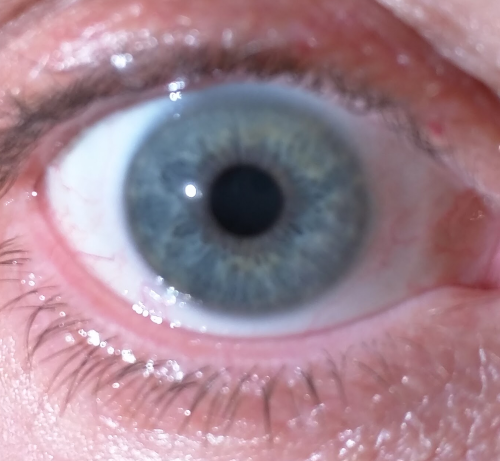Identity Primer: Retina vs. Iris Eye Biometrics
NOTE: This is a reprint of an article originally published in June 2017 on a different blog. We are reposting them on the Blink Identity blog because these issues are important and we want to keep our writing on these issues in one place.
Biometric identification is a technique that uses unique human characteristics to identify an individual. As opposed to passwords (something you know) or key cards (something you have), the various biometrics are something you are and so they are harder to spoof or break. Fingerprints are the most well-known biometric modality, but today I want to talk about iris recognition and how it's different from retina scanning.
When an optometrist looks through the lens of the eye, they are examining the retina. This wall of capillaries that supplies blood to the retina is unique. The blood vessel pattern is not genetically determined so even identical twins do not have the same pattern of blood vessels on the retina. The concept behind retinal identification is old - the idea was first published in 1935 - but the technology wasn't viable until the late 1970s. To use the system, a person must first enroll. A device shines a low-energy infrared light into the eye and an image of the retina is captured. To be identified, the person looks into sensor and the stored enrollment image is compared to the image captured by the sensor.
Retina scanning is not widely used, because the capture process for both enrollment and verification is difficult and requires multiple attempts. The process can cause discomfort. For this reason, it's fallen out of favor and replaced with iris scanning. Most of the time, if you hear someone talking about retina scanning, they are actually talking about iris recognition.
The retina (left) and iris (right) are very different things.
So how does it work?
An image of the iris is captured - with an ordinary camera. What isn't ordinary is the IR illumination. It's needed to get enough details from really dark eyes. Infrared radiation is electromagnetic radiation with longer wavelengths than those of visible light, and is therefore invisible, although it is sometimes loosely called infrared light. Infrared light falls just outside the visible spectrum, beyond the edge of what we can see as red.
You can see in the images below, that in a color image of a brown eye, you don't see much detail. Light blue eyes show lots of detail when photographed with a normal camera but dark eyes do not. Converting the image to gray scale doesn't help very much. But in the IR illuminated version, you can see all of the detail of the iris itself. So for iris matching, the image is captured with IR illumination.
Once the image is captured, the iris is detected and if you can image a spiral drawn on top of the iris, and the image unwound, so the iris image is now one very long, line that is one pixel high. That image is converted into binary which makes its easy to compare and very accurate. This is a key advantage of the iris as a biometric modality - it's very fast and very accurate.






